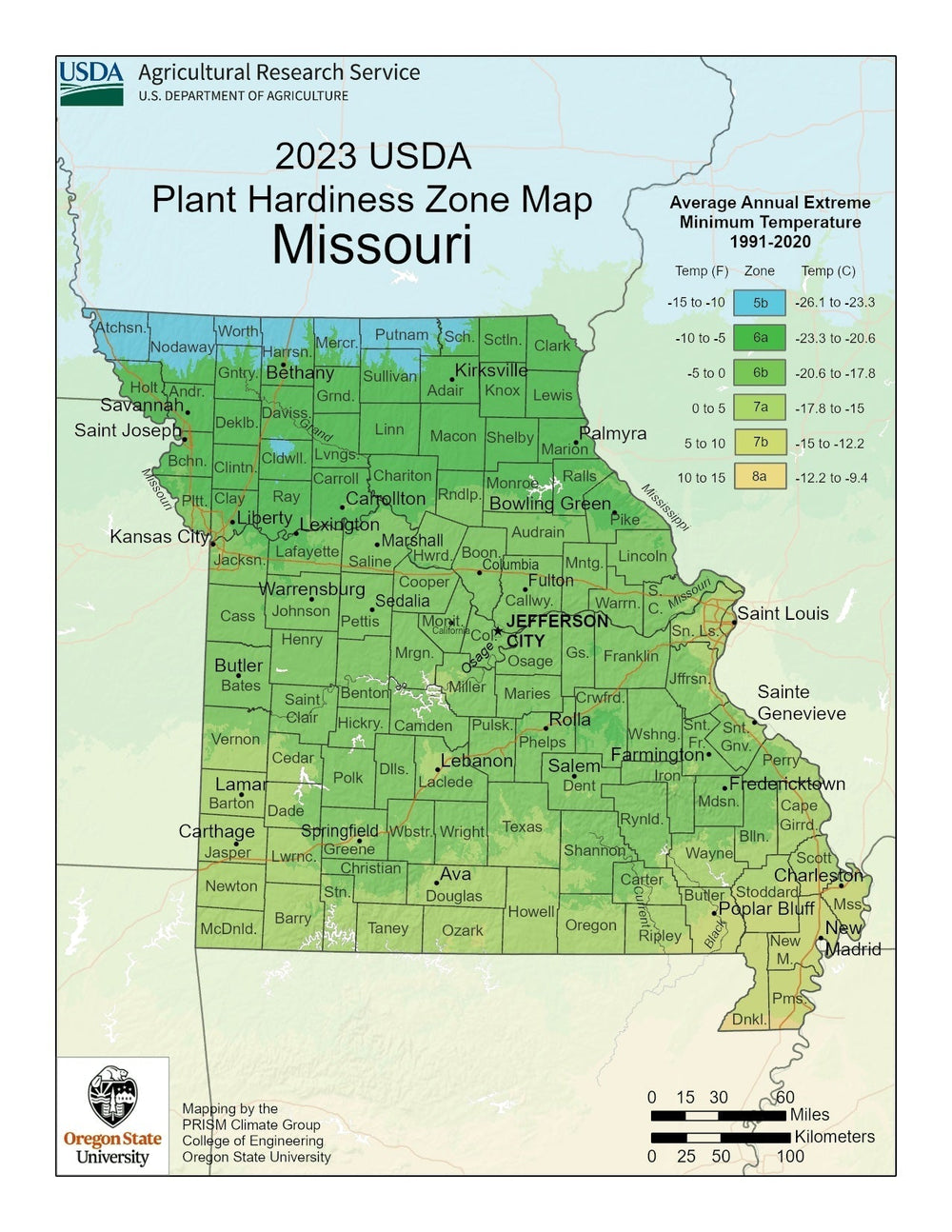Image from USDA
Characteristics of Missouri’s Planting Region
Missouri’s climate is primarily humid continental, with some southern regions transitioning into a humid subtropical zone. The state’s location in the central U.S. creates a mix of weather patterns, including significant seasonal temperature variations.
As a gardener in the Show-Me State, you can expect:
- Hot, humid summers, with July temperatures averaging between 75°F and 90°F (23.9°C to 32.2°C).
- Cold winters, especially in northern areas, where January averages range from 15°F to 35°F (-9.4°C to 1.7°C).
- A moderate growing season, generally spanning April to October.
- Severe weather risks, including tornadoes, thunderstorms, and occasional flooding.
Missouri’s diverse soils, from the loamy plains to the rocky Ozarks, create distinct microclimates that affect plant growth. Most regions experience frost-free days from mid-April through mid-October, providing a suitable window for cultivating various crops.

Challenges of Growing in Missouri
Weather Extremes
Missouri’s unpredictable weather patterns, including late frosts and sudden heatwaves, can disrupt planting schedules and damage crops. Tornadoes and severe storms are also a concern during the growing season.
Soil Diversity
The state’s soil types range from fertile loams in river valleys to rocky and acidic soils in the Ozarks. This variability requires gardeners to adapt practices, such as amending soils or selecting appropriate plants for their region.
Pests and Diseases
Hot, humid summers create favorable conditions for pests like Japanese beetles and fungal diseases, which can harm both ornamental and edible plants.

The Benefits of Using a Greenhouse in Missouri
While Missouri’s climate offers plenty of opportunities for gardening, a greenhouse can significantly enhance your growing potential:
1. Extend Your Growing Season
-
Without a Greenhouse: Outdoor planting typically starts in mid-April and ends by mid-October in most parts of Missouri.
-
With a Greenhouse: Gardeners can start planting as early as February and continue harvesting well into November, or even grow year-round in some cases. This extended season is ideal for cool-weather crops like lettuce and spinach that thrive outside Missouri’s summer heat.
Learn more about your area's specific growing dates and the best vegetables to plant in each part of Missouri.

Customer images of their Greenhouse setup in Missouri
2. Grow a Wider Variety of Vegetables Without a Greenhouse:
-
Without a Greenhouse: Missouri’s outdoor conditions are well-suited for traditional crops like:
|
|
-
With a Greenhouse:
You can create controlled environments to grow plants that might struggle outdoors, including:
|
|
|

Why Planta Greenhouses?
- Wind resistant up to 65 mph (learn more about how our greenhouses hold up in high-altitude climates).
- Withstands a snow load of up to 98 psf (480kg/square meter).
- Made with a heavy-duty galvanized steel frame.
- Polycarbonate panels provide 100% protection against UV rays.
- The Sungrow greenhouse is bell-shaped - allows the wind, snow, and hail to slide off the sides.
- Extendable (Sungrow, Sigma and Farmer models can be extended beyond 100ft)
- Made in Europe and are exclusively imported
-
Maintenance-free

